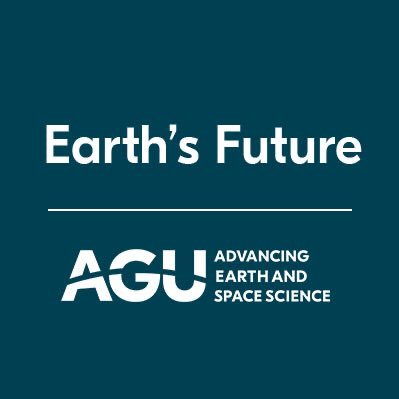
GNS Science Te Pū Ao
@gnsscience
Followers
9K
Following
553
Media
773
Statuses
2K
Welcome to Earth Sciences New Zealand. 🌏 Today marks day one of the new research organisation Earth Sciences New Zealand – formed by the merging of @gnsscience and NIWA. 🙌
8
4
36
You can hear Dr Fry @33.47 minutes on ABC Australia's Pacific Beat programme👇 https://t.co/bQuS4ZXyx6
abc.net.au
Samoa's power blackouts appears to be worsening. Residents on the island of Upolu are now undergoing power rationing which is affecting homes, businesses and schools. It's frustrating residents, with...
0
0
0
Listen to GNS tsunami scientist Dr Bill Fry explain how NZ and the UK are partnering up to vastly expand the Pacific tsunami monitoring network by trialling laser technology on existing seafloor telecommunications cables.
2
0
2
South Dunedin’s flood risk has been in the media spotlight. Much of the science underpinning these risk assessments comes from research led by GNS’s Simon Cox, recently featured in EOS https://t.co/lELdjAbhjv 📷Hannah Harland /South Dunedin Futures Programme, Dunedin City Council
0
1
4
Laser tech on subsea cables is being trialled to detect tsunamis in the SW Pacific. This innovative approach is tantamount to having 70 additional sensors lined up like infantry on the seafloor poised to alert tsunami threats. Read the full story👇 https://t.co/pi4Esz6IPG
0
1
3
Principal Scientist Dr Simon Cox’s innovative research into the impact of sea-level rise on groundwater and related hazards in South Dunedin is informing risk assessments and adaptation planning for the city. Great to see this important work featured in @EarthsFutureEiC!
Understanding how #groundwater will respond to sea-level rise is important for hazard prediction on coastal land. A new case-study from New Zealand shows how groundwater & the effects of tides & rainfall can be mapped. 🔗 https://t.co/i3ihaydkQV
#AGUPubs #OpenAccess
0
8
7
Our Drive it Down! project is set to inspire young minds to grapple with key climate change concepts and take action on their emissions. @NZScienceLearn has released our climate teaching resources, helping us reach students and teachers across Aotearoa 👉 https://t.co/Oge3436Qcb
0
0
0
Our 33-year joint GNS-NIWA atmospheric radiocarbon record has enabled a groundbreaking study that has tracked long-term changes in the atmosphere’s “self-cleaning” capacity – and reveals methane emissions may be rising faster than previously assumed 👉 https://t.co/N0t6XrXQ66
1
2
5
What’s it like camping on the snow in Antarctica? Check out @SWAIS2C Downhole Logger Arne Ulfer’s tent tour! The team, including Co-Chief Scientist Richard Levy (GNS and @VicUniWgtn) lived in tents at their Ross Ice Shelf research camp this summer 👉 https://t.co/h8JPE2NkxN
0
0
1
@NASAEarth Read NASA's short interview with GNS volcanologist Dr Craig Miller as he explains the driving forces generating the island's captivating plume 👇 https://t.co/0pTXzFRaeu
earthobservatory.nasa.gov
The perpetually restless and occasionally explosive volcano in New Zealand has been emitting steam, volcanic gases, and a bit of ash.
0
3
6
Our GeoNet cameras always have eyes on our volcanoes 👀 and sometimes @NASAEarth does too! Snap Whakaari, you've been caught on satellite camera🛰️ The recent puffs from NZ's most active volcano have caught the attention of NASA Earth Observatory, enough to be an #imageoftheday📸
1
0
6
Read more about how we forecast earthquakes here👇 https://t.co/8aUShnnB4R
gns.cri.nz
GNS Science has produced earthquake forecasts since the late 1990s, but it wasn’t until the 2010/11 Canterbury earthquakes that earthquake forecast information was publicly provided.
0
0
2
Forecasts are used by a range of decision-makers in the immediate aftermath of a large earthquake up to long-term planning decisions to inform response and recovery efforts and increase our resilience to future earthquake events💪
1
0
2
Like climate and weather forecasts, we can use our understanding of geophysical processes and patterns in earthquake occurrence to build forecast models💻
1
0
2
Ever wondered what an earthquake forecast is? While we can't tell you exactly when & where an EQ will occur, we can give you a likelihood of an earthquake of a particular size occurring in a particular region over a given time period. This is called an earthquake forecast📈
1
0
4
Check out this story to find out what is involved in putting together an Urban Geological Map, what they show and what they are used for💻 https://t.co/7daLX0CqeN
gns.cri.nz
Since completing a nationwide 1:250,000-scale geological map a decade ago GNS Science have been developing geological maps for urban areas across the country.
0
0
3
The Urban Geological Mapping Project, funded by the New Zealand Government, requires a broad diversity of geoscience skills and at the heart of this work is GNS’s Urban Geological Mapping Project team🗺️👩🔬
1
0
2
🏘️Have you ever been curious how the urban area you call home is planned and developed for? Why are things built where they are? Where do the resources come from?
1
1
2
Merry KIS-mas from the SWAIS2C on-ice team, who are spending a white Christmas at their deep-field research camp at KIS3 on Antarctica's Ross Ice Shelf! If you look closely you might spot Co-Chief Scientist Richard Levy (GNS and @VicUniWgtn).
0
1
7
While our GNS staff take a well-earned break we say a special thank you to our team in the National Geohazards Monitoring Centre, working 24/7 on monitoring and response services. They're supported by an on-call duty team who are always ready to respond.
0
0
4





